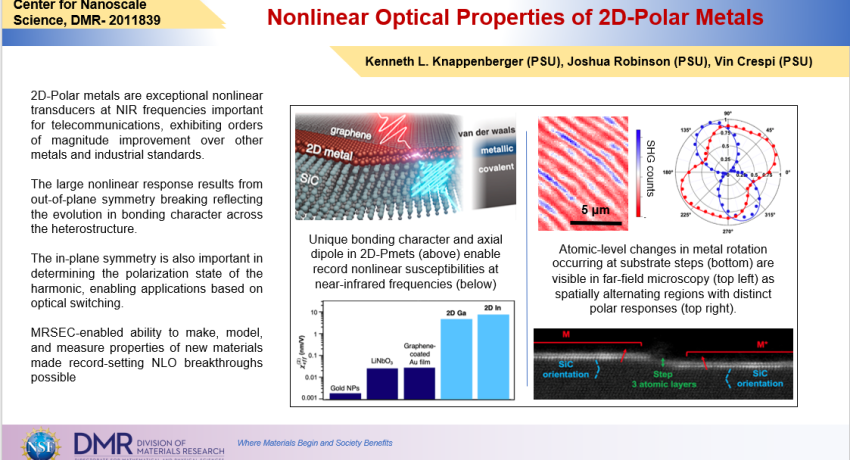What Has Been Achieved: We have demonstrated nonlinear susceptibilities of 2D polar metals approaching 10 nm/V in the near-IR, which are among the largest in this electromagnetic region and record breaking for metal second harmonic transduction. We have also investigated the microscopic origin of this large susceptibility, which is unexpected based on symmetry predictions. This is enabled by an out-of-plane symmetry breaking with a <0.2Angstrom change in metal-metal bond distance reflecting an evolution in bonding character. The in-plane symmetry resulting from a rotation of the lattice at step edges is evident in polarization-resolved measurements.
Importance of the Achievement: The current state of the art for second order nonlinearities is achieved by multiple quantum well structures, which are intrinsically limited to Mid-IR frequencies. We have demonstrated that 2D-polar metals are a promising platform to explore for potentially achieving similar performance in the technologically important Vis-NIR range. We also show an ability to control the polarization state of light based on the atomic structure of the material. This study has also demonstrated the ability to connect nonlinear optical properties with atomic level structure, paving the way for future collaborations in tailoring nonlinear optical properties by controlled synthetic or post-synthetic manipulation of material structure.
Unique Feature(s) of the MRSEC/PREM that Enabled this Achievement: MRSEC-enabled ability to collaboratively make, model, and measure NLO properties of new materials made this achievement possible. Publication: Knappenberger et. al.,
Nano Letters, 2020, 20, 11, 8312, 8318, https://dx.doi.org/10.1021/acs.nanolett.0c03481


